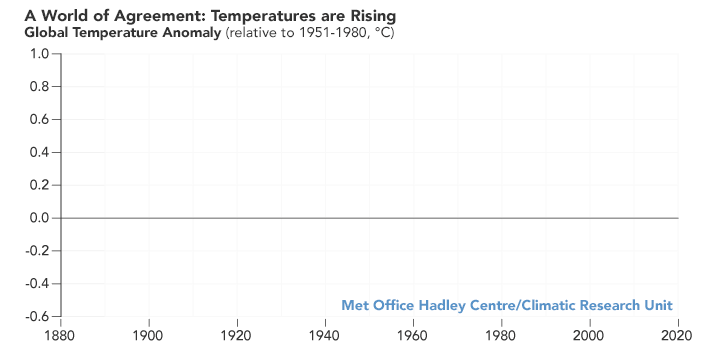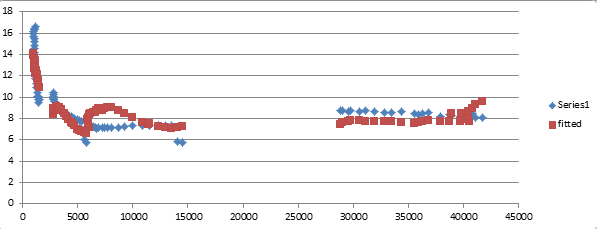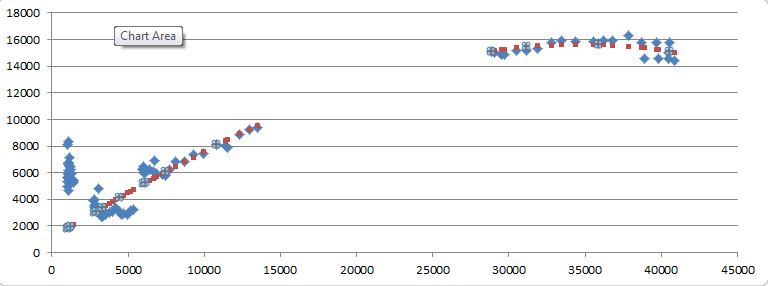Before Covid, I had a high degree of confidence in the scientific consensus around climate change – i.e. I believed the scientists who said that climate change was real and was primarily caused by human activity. I even read some of the IPCC policy summary documents – notably this one. My faith in science-flavoured policy institutions like the IPCC was in large part owed to my status as an educated, middle class person, with employment and a social set in the same milieu.
It took Covid, and the destastrous string of wrong-headed policy decisions that followed – from community masking to lockdowns to vaxxine passports – for my faith to be forever shaken. I have filed for divorce from ‘the Science’.
What does ‘the Science’ really say?
And so I have now re-read the policy summary, with a more critical eye. When I do so, it’s quite shocking how weak the evidence for anthropogenic climate change actually is, and to which lengths the rapporteurs go to mislead on the strength of the evidence. Essentially, the evidence for greenhouse-gas driven climate change boils down to:
- Measures of temperature: They measure the temperature and indeed, find that with very high confidence, the Earth is getting warmer.
- Measures of concentrations of certain atmospheric gases: Notably CO2, Methane and NO. These too, can be measured with high confidence. There are more of these gases in the atmosphere now than at any time in the Earth’s history, though they are still very rare compared to NItrogen, Oxygen and Argon, which together account for 99.5% of the atmosphere.
- A concept of ‘Radiative Forcing’ as applied to greenhouse gases (GHGs), which provides a theoretically link between (1) and (2), i.e. which measures the extent to which changes in (2) can cause (1).
So that might look like a slam-dunk case, until you think about what is really being said – and what is ‘not’ being said. Sure GHGs can have an effect on surface temperatures, but what else causes radiative forcing? Three things, it turns out, and the least important of them is GHGs. First on the list – and this should surprise absolutely no one – is the heating effect of the sun (Solar irradiance).
The glowing hot Elephant in the room
Essentially the sun is the reason why we are not a barren, icy rock floating in space. The magnitude of the sun’s energy is so great that if it were to be switched off, the average surface temperature on Earth would fall to -17 degrees celsius in just a week – almost all life would be extinguished. Within a year, it would be -73 degrees, an unimaginably cold temperature.
The IPCC report makes a brief mention of Solar Irradiance, suggesting a positive change in SI contributes only minimally to global warming, essentially because the amount of variation is thought to be very, very low. The problem here, is that, given the size of the effect of solar irradiance, even small errors in the measurement or composition of the sun’s energy can overpower the effects of greenhouse gas concentrations in determining overall temperature change – by an order of magnitude. So a really KEY question in all of climate science must be, how accurately can we measure solar irradiance?
Sceptics will not be surprised to discover that the answer is, in fact, ‘not accurately at all’. This very readable Nature paper has all the details, but the upshot is that you can’t really measure SI from Earth, because the atmosphere gets in the way. You can try to measure it from space, but unfortunately space also gets in the way – high-energy particles, outgassing and optics damage all mean that the data has to be ‘adjusted’ to create anything like a time series. A number of space-based measurement exercises have been undertaken, starting in 1985, but each with different techniques and equipment. In other words, we have no idea if the amount of solar irradiance has been increasing or decreasing over the time period in which the climate on Earth has been warming.
Omitting albedo from the models reflects badly on ‘the Science’
The second most important cause of radiative forcing is albedo, or ‘reflectiveness’. The more reflective the Earth’s surface, the more sunlight ‘bounces’ off the planet and goes back out into space. The less reflective, the more sunlight is absorbed and turned into heat energy when it hits a terrestrial surface. Some surfaces are very reflective – like deserts, snowscapes, still lakes and the tops of clouds. Others are less reflective, like forests, urban environments and oceans. Needless to say, constructing a model with anything like accuracy that takes these effects into account is a data scientist’s worst nightmare – the risks of model misspecification or data error are enormous. In fairness, ‘the Science’ doesn’t even claim to understand clouds, much less cloud albedo, because they know that we all know how rubbish the weather forecasts are one week out – not to mention fifty years out.
The IPCC report does mention albedo as an offsetting effect in relation to aerosols, but fails to provide context as to just how much uncertainty there is in taking account of these effects. For example, how much does global warming increase cloud cover? Or: is deforestation increasing albedo and contributing to cooling? What about desertification? Not covered by the IPCC because the answer is, they simply don’t know.
The big point here is: if you are going to include radiative forcing in the model for the GHGs, you need to consider all the ways in which the Earth’s atmosphere gets and retains heat. Otherwise, what you are left with is a casual correlation between an observed increase in temperatures and a rise in GHG concentrations since pre-industrial times. We are reminded that correlation is not causation.
Is global warming causing GHG emissions?
For one thing, it may be the exact reverse. We see increasing temperatures from 1880 onwards, and this corresponds pretty neatly with an increase in global population.


Just compare the two graphs above, and pretend you knew nothing of the ‘climate change consensus’. Would it not make sense to say that (1) the earth starts warming (due to, say, increased solar irradiance), (2) more heat makes the planet more livable for large animals like us, so our population goes up, and (3) with more of us around, we burn more fossil fuels making CO2 and trace gases in the atmosphere rise?
It might seem like hubris that I – who has never studied atmospheric science or indeed any hard science – should dare to think I could understand these phenomena better than the many bright researchers whose business it is to do just that. The fact is, I actually don’t consider myself any smarter than all of these people, and certainly not the best of them, and in an ideal world, I wouldn’t have to even try. The lessons from Covid, however, is that there are three good reasons why all the climate scientists could form a consensus so wrong-headed that even humble Graham can formulate a clearer understanding:
Undiagnosed irrationality.
Human beings are deeply irrational, a fact which societies of the past understood and made a functional part of their world view. There is no zealot more dangerous than the one who believes that he is above belief. Whereas a hundred years ago, most Christian priests understood that the spiritual realm was defined along a separate axis to the scientific one (and respected that other realm as distinct from their own), the condition of ‘the Science’ today is that its adherents are unaware of their own proclivity for myth-making. They treat articles of faith as if they were fact, because they lack a place to safely park their own irrationality.
This creates a dangerous culture of cognitive bias. Dogma, by its nature, is beyond questioning. We saw this clearly in Covid, where many scientists and doctors were afraid to challenge the ‘safe and effective’ mantra. Even today, with excess deaths for cardiovascular disease continuing at unprecedented levels, the mainstream cling to an irrational belief in their vaxxine theology.
Post-modernism.
The lumping in of climate anxiety with other tenants of contemporary ‘woke’ orthodoxy, such as trans-activism or critical race theory, is a favourite trope of the right. Yet, there is something to be said for the role of post-modernism in all of these trends. Post-modernism is the philosophical belief that reality is a social construct and therefore independent of objective truth. I and others have argued that this belief flourishes in developed countries today because so many people have been freed from the immediate constraints of the physical world by the luxury of their well-catered urban lifestyles. It is precisely here that we have a tie-in to climate activism.
Much of the ‘science’ around anthropogenic climate change reposes on an assumption that humans possess absolute mastery over the physical world. If you are an apartment-dwelling urbanite for whom food comes from a restaurant or an express supermarket, and water comes purified out of a pipe or a plastic bottle, you could be forgiven for believing this to be true.
Therefore climate activism, as a faith system, reposes on the idea that ‘we’ have the power to change everything, including the temperature of the planet. The idea that the massive ball of heat in the sky above us, infinitely more powerful than anything we could ever produce, is the true master of our climatic fate, goes against this world view, just as it is anathema to post-modernism that you are born into a sex, which is determined by God/nature and is immutable. How easy, therefore, to downplay the role of solar irradiation (outside our control) in favour of GHGs (something we can control).
Overeducation.
Simply put, academia is not what it used to be, back when only a handful of really smart people got to do it. Not alone does mass access to higher education reduce the average IQs of those with university degrees, I have argued that the very process of educating someone beyond their cognitive abilities leads to a reduction in their capacity to engage in critical thought. Increasingly, the scientific consensus to which the IPCC and policymakers like to refer, is created among these very people whose qualifications are not a result of intellectual merit, but rather is owed to the fact that, at age 18, they had both middle class parents and a distaste for any kind of manual labour.
Critical thought is beyond them. Even where the predominant ‘Science’ is patently in error, these young overeducated bourgeois lack the mental faculties and the tools to challenge it. What kind of a consensus are they likely to form, and why on Earth should the rest of us trust it?


